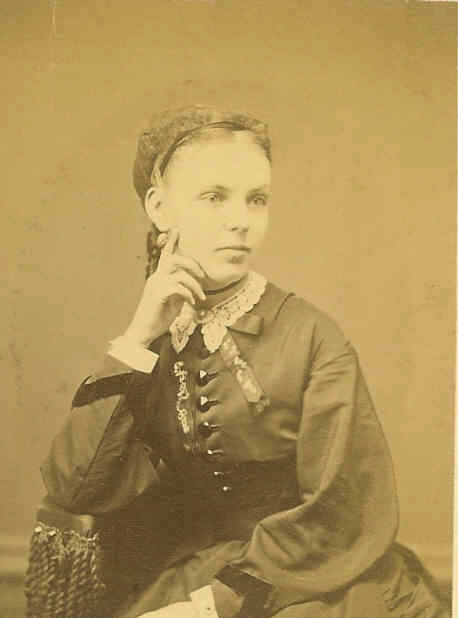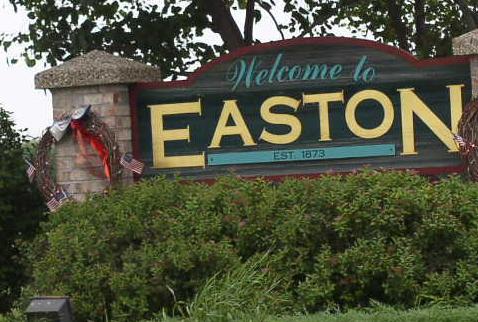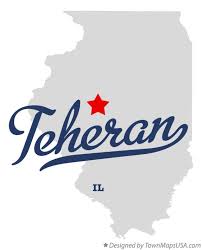Crane Creek History part 3 of 4
WALKER’S GROVE
This grove, to which such frequent reference has already been made, was the nucleus around and in which all the earliest settlements were made. It was known as Price’s Grove prior to the purchase of James Walker, in 1837, since which date it has been called by its present name. The grove proper embraces an area of not more than four hundred acres, and, in an early day, was as fine a body of timber as could be found in the county. A fine growth of the oak family, black walnut, soft and sugar maple, hickory, both shell-bark and smooth-bark, white walnut or butternut, mulberry ; and of shrubbery, the red-bud, papaw, dogwood, and many other varieties were found here. But little that is valuable, except for purposes of fencing and firewood, remains today. Most of those who erected their log cabins near this spot, in the days of its early settlement, have long since crossed over the still waters, and have been succeeded by a class of unpretending ‘citizens, that for industry, intelli- gence and moral worth will compare favorably with any portion of the county or State.
While the present inhabitants are eager for the daily papers, lest their interests may be affected by the ” spring “or “decline ” in the ” hog market,” the pioneers were content with mails once a week, or less frequently during bad weather or high water. Amid the difficulties and discouragements by which they were often surrounded, they had their social enjoyments, as those who have listened to their animated discussions of the respective merits of “gourd-seed” and “flint” corn, or the prominent points of a favorite ” coon dog,” can abundantly testify. In and around this point were the beginnings of those enterprises which in their nature tend to the permanent establishment and development of society, and which are handmaidens in the onward march of civilization. We refer to churches and schools. ”
The groves were God’s first temples,” and here in nature’s sanctuary, where the breezes came laden with the perfumes of a thousand flowers, early meetings were held. Rev. Thomas Plasters was the first to lift up the Gospel banner in this section. He was here as early as 1834, and belonged to that order of worshipers known in the West as ” Hardshell Baptists,” or, as they are otherwise called, the
“Forty-gallon Baptist^.” His preaching was somewhat after the style of the famous ” Come, Buck-ah ” sermon, recorded in the ” Hoosier Schoolmaster.” He had ” the see-sawing gestures, the nasal resonance, the sniffle and melancholy minor key,” which seems to be for an everlasting inheritance to his reverend brethren. And in addition to all these, as he warmed with his discourse, he had a habit of tugging vigorously first at one ear and then at the other, by way of lending emphasis and solemnity to his remarks. Still it was enjoyed by those early settlers who had been for some time without the privileges of the church. He discoursed many times at the residence of James A. Revis, in the southern part of the township.
Rev. John L. Turner, who came in 1840, and of whom mention has already been made, was an early minister in the Baptist Churches of this section. Rev. Abraham Bale, who should have been classed among the settlers of 1842-43, was a minister in the same connection. He settled on the farm where George Thomas now lives, and was the second resi- dent minister in the township. He built what is known as Bale’s Mill, in Menard County, and which passed from his hands to those of his brother, Jacob, but is at present owned by a son of Abraham Bale. Rev. Ross, a radical Methodist minister, preached at the residence of Solomon Norris, in quite an early day. Of the Methodist Episcopal Church, Revs. William Coder, Wallace and Moreland were among the earliest. A church was built a number of years ago, near the site of New Hope burying-ground, in Walker’s Grove, but was destroyed by fire just about the time of its completion, and before services had ever been held in it. The house was never rebuilt. Another was erected in the Sandridge timber, about the year 1859, but its use has been discontinued for some years, and the building is fast going to rack. Both of these houses were the property of the Baptist brethren, and the latter is the only public house of worship in the township.
EARLY POST OFFICE, STORES, SCHOOLS, ETC.
A post office called Walker’s Grove Post Office was established at the house of James Walker, in 1839. It was on the mail route from Springfield to Havana. James Walker was the first Postmaster. After a period of about eighteen months, it was moved across the river into Menard County. An office was established at the grove, at a later date, and was there in 1854, at which time William Warnock, Jr., now of Mason City, was Postmaster. Jack Close, who afterward occupied rather a prominent place among the early merchants of Havana, had a small country store in the township as early as 1841. This was doubtless the first attempt made at merchandising in this section. Not long after Close began playing merchant, William Walker opened a small stock of dry goods and groceries at the grove. For several years, a small establishment was kept here by different parties, that of William Warnock, Jr., and his uncle being about the last. There is no store in the township at present ; those at Kilbourne, Easton and Mason City, are, however, easily accessible to the citizens of Crane Creek.
The first schoolhouse built in the township, was on land belonging to Henry Sears, and was built in 1836. It was rather a rude affair, put up by those in the neighborhood for the benefit of their children. It drew patronage from a large extent of country. William Lease kept the first school and was paid for his services by individual subscription. James Buckner, M. D., was from Kentucky and came to this part of the county in 1839. He was the first physician to locate, and stopped for a time at the residence of John Yardley. He is” said to have been a well-read and successful practitioner. The prevailing diseases were bilious and lung fever with an occasional case of chills. Dr. Buckner lived a number of years on rented land in Walker’s Grove, and then moved to Petersburg. His last place of residence was near Bloomington, in McLean County, where he died some years ago. Of him Uncle Henry, Sears says: ” He was a poor man, but every inch a gentleman.” Dr. John Morgan was here early, but did not remain long. He had the gift of gab well developed, but his knowledge of medicine was looked upon as being somewhat superficial. He returned to New Orleans whence he came, and has for a number of years past been a resident of Texas.
The milling for the earliest settlers was done on the Mackinaw, and at Broadwell’s, on the Sangamon. Later, it was obtained at Simmonds’ and McHarry’s on the Quiver, and, after the building of the Bales’ mill, they, for the most part, went to it.
FIRST DEATH, BIRTH AND MARRIAGE.
Two children of the family of Alexander Revis, died in 1833, and are supposed to be the first deaths that occurred among the early settlers. The father and mother followed them some years later, and were laid to rest beside their sleeping little ones near what is known as Revis Springs. But few, if any, are now living who can point out the exact spot where the mortal remains of most of this pioneer family lie buried. The first wedding to occur in the township, so far as we have been able to ascertain, was that of John Mounts and Jane Summers. This happy event, by which two hearts were made to beat as one, transpired in 1830. No doubt John could exclaim with the poet (slightly varied),
“I would, were she always thus nigh,
Have nothing to wish or to fear,
No mortal so happy as I, My Summers would last all the year.”
To the squaw wife of James Price is accorded the honor of becoming the mother of the first child born in what is now Crane Creek Township. If living, he has been reared among the kinsmen of his mother in the Far West, and may, for aught we know, even now be quietly surveying the situation, from the camp of Sitting Bull, preparatory to spreading consternation throughout our Western frontier settlements.
Among the early Justices of the Peace, the names of Ira Patterson, Henry Norris and Robert Turner occur. Patterson and Norris were officers when this was yet included in the limits of Menard County. Turner was perhaps the first after the organization of Mason County. Patterson, after filling this and offices of minor importance for some years, went West to grow up with the country. And that he did grow well is attested by the fact that, a number of years ago, he was chosen to the important position of Governor of Oregon.
The first deed to a piece of land that Henry Sears ever had made, was drafted by the late martyred President, Abraham Lincoln. In the good old days of Whigs and Democrats, this section was Democratic, and, since the organization of the Republican party, the township has continued to march under the same banner. The scarcity of money in the days of the early settlers was a great source of annoyance, and yet, any one with a liberal amount of industry could easily supply himself with an article, which, for purposes of barter and exchange, was in as high favor as the ” dollar of our daddies ”
Of today. Coons were plentiful, and a good coon-skin was taken by the merchant in exchange for goods as readily as the value of it in cash would have been taken. J. M. Estep says that the first pair of boots he ever had he purchased of 0. M. Ross, in Havana, in 1836, and paid the entire cost in coon-skins. That the early settler would sometimes tax his ingenuity and exercise his physical frame in an unusual manner in order to obtain a little of the ” 0-be-joyful,” is evinced by the following incident: William Summers, who was fond of his “toddy,” but who was often without the “wherewithal”
necessary to obtain it, laid a wager on a certain occasion, that he could gallop, horse-fashion, on his hands and feet one-quarter of a mile within a given length of time. The feat was accomplished, and Summers, having obtained his quart of “old rye,” remarked to his friend Jesse Baker, “We can contrive many ways in order to obtain our whisky, rather than to pay cash.”
The second apple orchard planted in the county was in this township, near Crane. Creek. The trees were obtained from the Gardner Nursery in Fulton County, which was established in 1824. The trees reared here from the seed seemed admirably adapted to the climate and soil, and at an early age bore well. The fruit, generally speaking, was remarkable for keeping well for long periods.It was not generally of the largest size, but good in quality and variety.
The township most probably took its name from the great numbers of sand-hill cranes that were found here in an early day. The evidence, however, on this point, is by no means conclusive. And thus having traced its history as best we have been able, guided by an earnest desire to place it properly on record, we part company with the settler of 1829 and those that have succeeded him, but not without regret.



